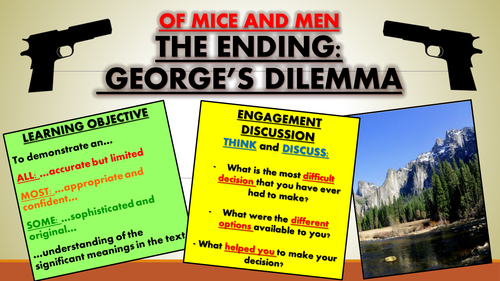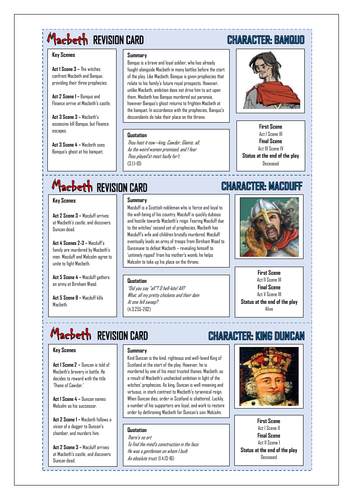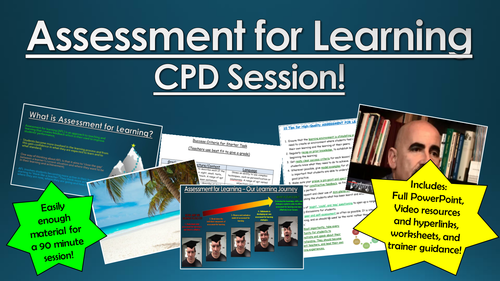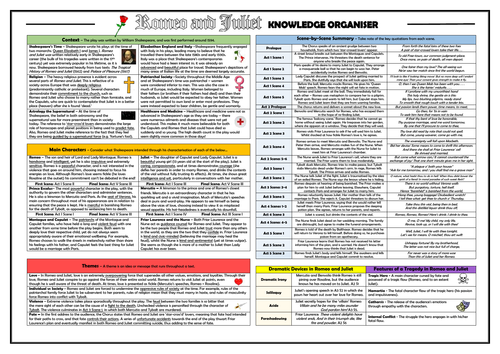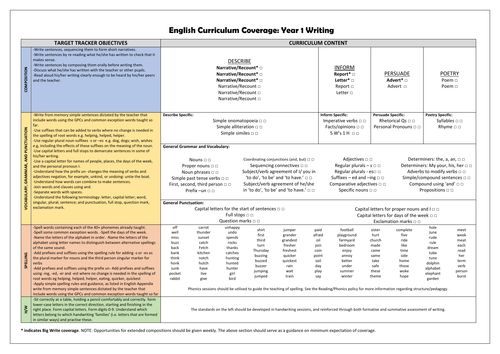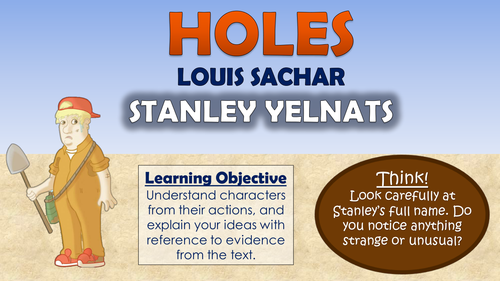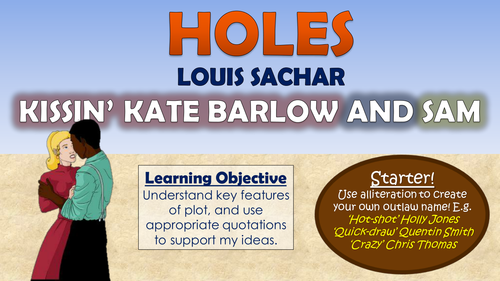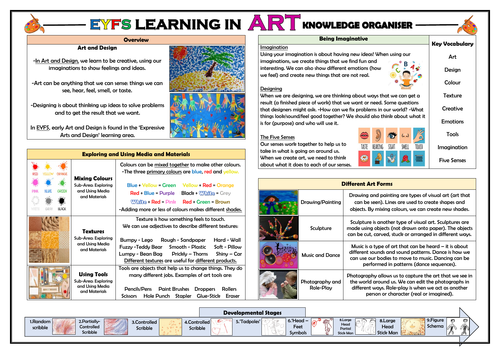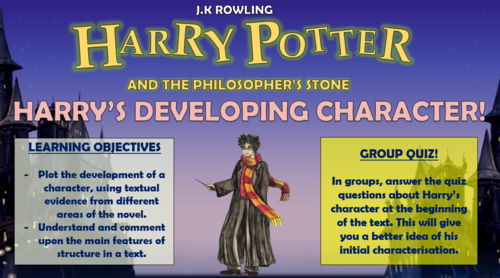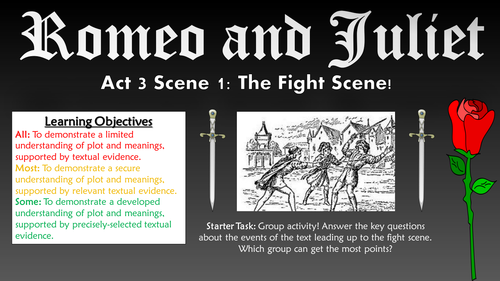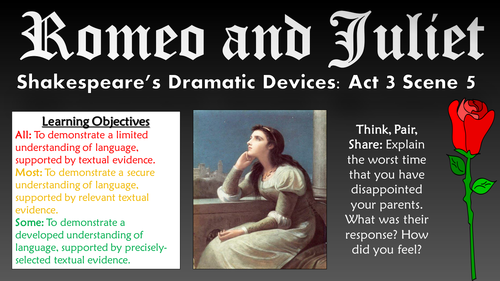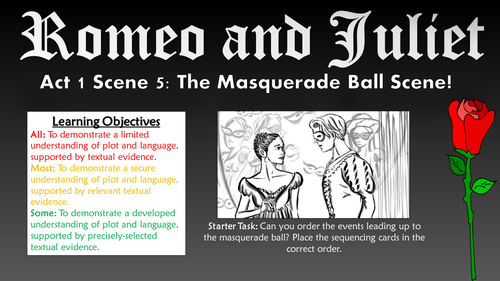
3k+Uploads
1874k+Views
2215k+Downloads
All resources

Of Mice and Men: The Ending - George's Dilemma
This engaging and interesting lesson aims to improve students' knowledge of the final events of the novel (the killing of Lennie by his best friend, George) in John Steinbeck's Of Mice and Men. It also aims to build their skills in retrieving information from texts, understanding the writer's ideas and opinions, and making precise and confident interpretations about texts.
The lesson uses a range of tasks, that require students to use their visual and interpersonal skills. It follows this learning journey:
- Reading, and interpreting the ending of the text;
- Inferring the hidden meanings in the final section of the text;
- Identifying the options available to George, and evaluating the pros and cons for each of them;
- Arguing a viewpoint either justifying or condemning George's actions;
- Evaluating each others' argumentative attempts.
The resource includes a comprehensive and visually engaging PowerPoint presentation, a worksheet to evaluate George's reasoning, an abstract from the text, a help-sheet for writing to analyse, and a lesson plan/ teacher guidance sheet.
All images in this resource are licensed for commercial use, and are cited on the final slide of the lesson presentation.
You can choose to buy this resource alone, or as part of the 'Of Mice and Men - All Lessons and Scheme' bundle, which contains seven full lessons, resources, teachers notes, and PowerPoint presentations, plus a Pointless Of Mice and Men game, for just £5!

Macbeth: Act 2 Scene 2 - The Murder of King Duncan!
This lesson aims to improve students’ understanding of one of the key scenes in William Shakespeare’s Macbeth – Act II Scene II. In particular, they learn to make insightful interpretations about Shakespeare’s use of symbolism, and are enabled to understand how this would have affected Shakespearean audiences.
The lesson utilises a range of tasks, that require students to be visual and interactive learners. It follows this learning journey:
- Defining the key term 'symbolism' and establishing its importance as a literary technique;
- Understanding the different objects that were used as symbols in Shakesperean times through a multiple choice team game;
- Reading and interpreting Act 2 Scene 2, and establishing how symbolism is utilised throughout;
- Summarising the events of the scene;
- Analysing Shakespeare's intentions in using literary techniques, and considering the audience reactions to them;
- Peer/self evaluating the learning in the lesson.
Included in this resource pack are:
- A well-presented, thorough, and informative, whole-lesson PowerPoint presentation;
- Resources for the reading and interpreting activity - full scene transcript with space for notes;
- A template to help scaffold the main task, complete with P.E.E instructions;
- A comprehensive teacher guidance form/lesson plan to assist delivery.
All images in this resource are licensed for commercial use, and are cited on the final slide of the lesson presentation.

The Merchant of Venice - Act 4 Scene 1 - The Courtroom Scene!
This engaging and informative lesson enables students to make clear, detailed and well-informed interpretations of Act IV Scene I of The Merchant of Venice. In particular, students develop their understanding of the key events/ implications of the scene, identify and analyse the language devices used by Shakespeare within key quotations from the scene, and consider the effect of these choices on Shakespearean audiences.
The lesson follows a step-by-step learning journey, in which children learn through:
Engage with an artist’s impression of the courtroom scene, honing their skills of inference and deduction;
Reading and comprehending the main events and meanings in the courtroom scene;
Identifying and analysing Shakespeare’s use of language through examples of Portia and Shylock lines in the scene;
Considering Shakespeare’s intentions and the Shakespearean audiences reactions to the scene;
Self assessing their learning through the lesson;
Included is:
Whole lesson PowerPoint - colourful and comprehensive;
Language devices cards for the card-sorting activity;
Key quotations cards;
Copy of Act IV Scene I;
Shakespeare’s Intentions/ Audience Reactions template;
Comprehensive lesson plan.
Resources are provided in PDF (to maintain formatting), Word (so that they are easily editable) and also in zipfiles.
The lesson contains opportunities for group learning, speaking and listening, peer assessment, and whole class discussion. I originally used these resources with year 10 and 11 classes, however colleagues have used them for between year 9 and year 13 with some adaptations.
All images are licensed for commercial use, and image rights are listed on the last page of the presentation.

Macbeth Revision Cards!
These colourful, comprehensive, and well-structured revision cards have been creatively designed for students securing their understanding of William Shakespeare’s tragedy ‘Macbeth.’ Each card is visually-appealing and highly-detailed, covering aspects of each feature including a full summary, cited quotations from the play, definitions/ examples, and a consideration of audience reactions. They are tried and tested, with teachers incorporating them in revision games, using them as essay writing aids, or utilising them as home revision aids. They are provided as both PDFs (to prevent formatting issues between computers) and as Word documents (for easy editing).
The revision cards included in this pack are:
Characters - Macbeth, Lady Macbeth, The Witches, Banquo, King Duncan, Macduff;
Context - William Shakespeare, James I and Divine Right, Witches and the Supernatural;
Devices - Dramatic Irony, Soliloquies and Asides, Dramatic Tension;
Scenes - Act 1 Scene 3 (Witches’ prophecies), Act 3 Scene 4 (Banquet/ Banquo’s ghost), Act 5 Scene 1 (Lady Macbeth sleepwalking);
Themes - Unchecked Ambition, Madness, Fate and the Supernatural.
For any questions or comments, please contact TandLGuru@yahoo.co.uk - Many thanks!

Assessment for Learning CPD Session!
This CPD session offers an engaging and original approach to introducing or revisiting assessment for learning. Grounded in educational research, this CPD session is interactive, well-structured, and has been successfully tried and tested. The aim of the CPD session is to develop the knowledge, skills, and strategies needed in order to utilise assessment for learning even more effectively in lessons, and it achieves this by embarking upon the following learning journey:
1. Understand what assessment for learning is and why it is effective.
2. Break down the individual components of assessment for learning.
3. Observe and evaluate a model of assessment for learning
4. Collaborate in developing your own assessment for learning strategies.
Included in this pack are: Full PowerPoint presentation, videos for analysis, hyperlinks to Youtube videos, resources for CPD activities, instructions and guidance for trainers/ presenters.
All images and videos are licensed for commercial use, and are cited on the final slide.
Bundle Sale

Macbeth: Lesson Bundle! (All Lessons, Plans, Resources, Everything!)
This engaging, varied, and informative scheme of learning is designed to help students gain understanding, assessment skills, and key interpretations of William Shakespeare's tragedy 'Macbeth.' Made up of a wide-range of interesting and exciting lessons, students should complete this scheme having gathered vital skills in: interpreting the significant meanings of the text, understanding the writer's ideas within the text, identifying the traits of key characters, settings, and themes, understanding dramatic and language devices, and relating the text to its social and historical context.
Stimulating, visual, and easily adaptable, these lessons provide suggested learning objectives and outcomes for students of a wide-range of abilities - The vast majority of tasks are differentiated to allow for different abilities and needs in your classroom. Each lesson loosely follows this logical learning journey to ensure that students learn in bite-size steps:
- Engaging
- Defining/ Understanding
- Identifying/Remembering
- Analysing/ Creating
- Peer or self evaluating.
All of the lessons are interactive, employ a variety of different teaching and learning methods and styles, and are visually-engaging. Resources, worksheets, and lesson plans are all provided, in addition to a fun Pointless game!
Bundle Sale

Love and Relationships Poetry Knowledge Organisers Huge Bundle!
THIS BUNDLE CONTAINS KNOWLEDGE ORGANISERS FOR ALL 15 OF THE LOVE AND RELATIONSHIPS POEMS!
These clear, detailed and visually-appealing knowledge organisers offer complete reference points for students learning or revising the following poems from the ‘Love and Relationships’ anthology:
Before You Were Mine - Carol Ann Duffy;
Climbing My Grandfather - Andrew Waterhouse;
Eden Rock - Charles Causley;
Follower -Seamus Heaney;
Letters from Yorkshire - Maura Dooley;
Love’s Philosophy - Percy Bysshe Shelley;
Mother, Any Distance - Simon Armitage;
Neutral Tones - Thomas Hardy
Porphyria’s Lover - Robert Browning
Singh Song - Daljit Nagra
Sonnet 29: ‘I think of thee’ - Elizabeth Barrett Browning
The Farmer’s Bride - Charlotte Mew
Walking Away - Cecil Day-Lewis
When We Two Parted - Lord Byron
Winter Swans - Owen Sheers
Each organiser contains a number of detailed, clear, and colourful sections explaining the key elements of the poem:
Context;
Line-by-Line Analysis;
Poetic Devices/ Language Devices;
Themes;
Form/Structure;
Poems for Comparison;
The Poet’s Influences.
The resources are designed to be printed onto A3, and are provided as both PDFs and Word documents (so that you can edit should you wish to). All images used are licensed for commercial use and are cited on a separate document (included).
Bundle Sale

Never Let Me Go Huge Bundle!
This bundle contains all of the Never Let Me Go lessons, the comprehension activities booklet, the knowledge organiser and the Pointless game!
These engaging, varied, and informative lessons have been designed to help students gain a valuable understanding of the plot, characters, language, and key messages in Kazuo Ishiguro’s novel ‘Never Let Me Go.’ The lessons enable students to gain a comprehensive understanding of the key features of content, language, and structure, in addition to considering Ishiguro’s key intentions in writing the novel.
All of the resources that you need to teach are included in the bundle: Whole lesson step-by-step PowerPoint presentations, informative and engaging , worksheets, activities, and lesson plans.
Contained in the bundle are lessons based on:
Characterisation of Tommy;
Ishiguro’s Use of Language;
Ruth;
The Dystopian Novel;
The Human Cloning Debate
The Theme of Life and Death
Plus the 30-page comprehension booklet, the knowledge organiser and the Pointless Game!
Stimulating, visual, and easily adaptable, these lessons provide suggested learning objectives and outcomes for students of a wide-range of abilities - The vast majority of tasks are differentiated to allow for different abilities and needs in your classroom. Each lesson loosely follows this logical learning journey to ensure that students learn in bite-size steps:
Engaging
Defining/ Understanding
Identifying/Remembering
Analysing/ Creating
Peer or self evaluating.
All of the lessons are interactive, employ a variety of different teaching and learning methods and styles, and are visually-engaging.
Bundle Sale

The Huge History Knowledge Organisers Bundle!
These clear, detailed and visually-appealing resources offer a complete reference point for students learning or revising knowledge relating to a wide range of history topics, including:
The Ancient Egyptians
The Ancient Greeks
The Vikings
The Romans
The Victorians
The Aztecs
Baghdad c.900AD
World War I
World War II
Tudors and Stuarts
The Great Fire of London
Anglo-Saxons
The Holocaust
The Cold War
Each organiser contains a number of comprehensive sections to guide learning and revision including:
Overviews of the era;
Annotated maps/ diagrams;
Timelines;
Rulers/ Emperors/ Prominent People;
Daily Life at the time;
Important facts/ dates
The resources are designed to be printed onto A3, and are provided as both PDF and Word versions (so that you can edit if you want to). All images used are licensed for commercial use and are cited on a separate document (included). The knowledge organisers may be used for students of all ages, but are most suitable for children in upper KS2 and lower KS3.
Bundle Sale

Huge Primary Design and Technology Knowledge Organisers Bundle!
These clear, detailed and visually-appealing resources offer a complete reference point for children, teachers and parents building knowledge of the Primary Design and Technology curriculum. The organisers are clear, logical and fully aligned with the expectations of the National Curriculum.
Included are organisers based on:
-KS1 Structures: Freestanding Structures
-KS2 Structures: Shell Structures;
-KS2 Structures: Frame Structures;
-KS1 Mechanisms: Slides and Levers;
-KS1 Mechanisms: Wheels and Axles;
-KS2 Mechanisms: Gears and Pulleys;
-KS1 Textiles: Joining Techniques;
-KS2 Textiles: Simple Sewing;
-KS2 Textiles: More Complex Sewing;
-KS2 Electrical Systems: Simple Circuits and Switches;
-KS2 Electrical Systems: More Complex Circuits and Switches;
-KS1 Food and Nutrition: Preparing Food
-KS2 Food and Nutrition: Healthy and Varied Diet;
-KS2 Food and Nutrition: Culture and Seasonality
The resources are designed to be printed onto A3 (although can be printed onto A4), and are provided in both PDF and Word versions (so that you can edit if you want to). All images used are licensed for commercial use and are cited on a separate document (included).

Social Media Blog Writing Template
This writing resource is perfect for use in literacy/writing lessons across the curriculum. Bright, colourful, and realistic, this resource enriches students' writing experiences whilst enabling them to showcase the skills and knowledge that they have picked up throughout their learning.
This lesson is also available as a part of a larger multi-media writing template bundle from TandLGuru that includes: Facebook page template, email template, messenger template, tabloid template, broadsheet template, and a postcard template. Most are easily editable and visually stimulating for students.

Romeo and Juliet Knowledge Organiser/ Revision Mat!
This detailed and visually-appealing resource offers a complete reference point for students learning or revising William Shakespeare's 'Romeo and Juliet.' It contains comprehensive sections on:
- Context;
- Scene by Scene Summary (with quotes);
- Main Characters;
- Themes;
- Dramatic Devices;
- Features of Tragedy.
Key words and ideas are underlined for easy reference. The resource is designed to be printed onto A3, and is provided as both a PDF and a Word version (so that you can edit if you want to). All images used are licensed for commercial use and are cited on a separate document (included).

Year 1 Writing Curriculum Coverage Checklist!
This checklist provides an academic overview of the writing curriculum content to be covered in Year 1. I offered this to teachers, who marked it off as they covered individual elements of the curriculum (their aim was to ‘tick’ each element twice over an academic year). They have found it extremely useful, as it offers a useful breakdown of the curriculum statements into individual components, which are not always self-explanatory. It is broken down into Composition, Vocabulary, Grammar and Punctuation, Spelling, and Handwriting sections.
Please note that the spellings listed are indicative of the patterns to be learnt - it is not the exhaustive list. Furthermore, the composition section details our interpretation of what needs to be covered over a year, some schools vary from this. For this reason, the document is provided in Word, for easy editing. It is also provided as a PDF, to prevent formatting issues between computers.
Hope that this proves helpful to you too!

Holes - Stanley Yelnats!
This engaging and informative lesson helps students to understand the introduction and development of the lead protagonist in Louis Sachar’s 'Holes' - Stanley Yelnats. Students explore Stanley’s character traits at the start of the story, using extracts from the text, before tracking his changing behaviour as the novel progresses.
The lesson follows a step-by-step learning journey, in which children learn through:
- Reading and understanding the selected extracts to determine the key traits of Stanley's character at different points in the text;
- Noticing trends in Stanley's character throughout the text, observing how he develops from his introduction in the text to later on in the story;
- Using textual evidence to back up ideas about Stanley;
- Creating two diary entries from the viewpoint of Stanley, accounting for his changes over time;
- Peer assessing each other's learning attempts;
Included is:
- Whole lesson PowerPoint - colourful and comprehensive;
- Cards for the card-sorting activity
- Selected extract- Chapter 4;
- Development of Stanley chart (Word and PDF)
- Comprehensive lesson plan.
There are also opportunities for group learning, peer assessment, and whole class discussion. I originally used these resources with year 7 and 8 classes, however colleagues have used them for between years 4 and 9 with minimal adaptations.
All images are licensed for commercial use, and image rights are listed on the last page of the presentation.

Holes - Kissin' Kate Barlow and Sam!
This engaging and informative lesson helps students to understand the key events of the sub-plot in Louis Sachar’s 'Holes' - the story of Kissin’ Kate Barlow and Sam. Students demonstrate their comprehension of the key events in Kate and Sam’s life, before forming their own opinion on Kissin’ Kate’s justification for becoming an outlaw.
The lesson follows a step-by-step learning journey, in which children learn through:
- Reading and understanding the selected extracts to comprehend the key events of the sub-plot;
- Storyboarding the key events (using the template provided) to demonstrate their understanding of key quotes and ideas;
- Using textual evidence to show a deeper understanding of the sub-plot, considering the writer's ideas and the historical context;
- Forming their own viewpoint about Kissin' Kate's actions through a writing to argue piece;
- Peer assessing each other's learning attempts;
Included is:
- Whole lesson PowerPoint - colourful and comprehensive;
- Storyboard Template;
- Selected extracts - Chapters 23, 25, and 26;
- Analysis of the Sub-Plot worksheet (and student answer sheet);
- Comprehensive lesson plan.
There are also opportunities for group learning, speaking and listening, peer assessment, and whole class discussion. I originally used these resources with year 7 and 8 classes, however colleagues have used them for between years 4 and 9 with minimal adaptations.
All images are licensed for commercial use, and image rights are listed on the last page of the presentation.

EYFS Learning in Art - Knowledge Organiser!
This clear, detailed and visually-appealing resource helps to detail and categorise the foundation Art and Design learning that takes place in the EYFS stage.
It is an important resource for EYFS teachers and parents, but also Art and Design subject leaders, to aid them in the development of a clearly-mapped and well-sequenced Art and Design curriculum across the school.
This organiser groups the Art and Design related learning into the relevant EYFS areas of learning - for this subject this is mainly 'Expressive Art and Design’, and particularly the strands ‘Exploring and Using Media and Materials’ and ‘Being Imaginative.’
There are also further sections detailing key vocabulary and art developmental stages.
The resource is designed to be printed onto A3, and is provided as both a PDF and a Word version (so that you can edit if you want to). All images used are licensed for commercial use and are cited on a separate document (included).

Harry Potter and the Philosopher's Stone - Harry's Developing Character!
This engaging and informative lesson enables students to understand how the lead protagonist of J.K Rowling’s Harry Potter and the Philosopher’s Stone (Harry himself) develops as a character throughout the narrative. In doing so, students learn the key structural features of the ‘Bildungsroman’ genre, and apply these to the different stages of development that Harry experiences. They then go on to design their own Bildungsroman storyboards!
The lesson follows a step-by-step learning journey, in which children learn through:
Comprehending how Harry is initially introduced to the reader;
Reading extracts from Chapters 2, 10 and 17 of Harry Potter and the Philosopher’s Stone, identifying how Harry’s character develops;
Analysing how the story fits the structure of a Bildungsroman novel, and tracking Harry’s development through the stages;
Creating a storyboard for their own Bildungsroman novel;
Self assessing their learning attempts.
Included is:
Whole lesson 30 slide PowerPoint - colourful and comprehensive;
Collated paper extracts of Chapters 2, 10, 17 of Harry Potter and the Philosopher’s Stone;
Harry’s development tracking template;
Create your own Bildungsroman novel storyboard template;
-Comprehensive lesson plan.
All resources are provided in Word (for easy editing) and PDF (to ensure formatting remains fixed between different computers).
There are also opportunities for group learning, speaking and listening, peer assessment, and whole class discussion. I originally used these resources with year 7/8 classes, however colleagues have used them for between years 3 and 10 with some adaptations.
All images are licensed for commercial use, and image rights are listed on the last page of the presentation.

Romeo and Juliet: Act 3 Scene 1 - The Fight Scene!
This interesting and engaging lesson enables students to gain a detailed understanding of the fight scene in William Shakespeare’s romantic tragedy Romeo and Juliet. Students learn to demonstrate a developed understanding of the plot and meanings throughout the scene, with the support of precisely-selected textual evidence. In particular, students consider Romeo's struggle between love and honour throughout the duration of the scene, and how social demands lead him towards his demise.
The lesson utilises a range of tasks, that require students to be attentive and interactive learners. It follows this learning journey:
- Establishing the events leading up to the fight, including a discussion regarding the characters and events that make a physical confrontation inevitable;
- Reading and interpreting Act III Scene I, interpreting and inferring the key meanings;
- Understanding the key themes throughout the scene, including Romeo's struggle between love and honour;
- More closely analysing the key meanings and developments within the scene;
- Peer/self evaluating the learning in the lesson.
Included in this resource pack are:
- A well-presented, thorough, and informative, whole-lesson PowerPoint presentation;
- Resources for the reading and interpreting activity - full scene transcript with space for notes;
- A closer analysis worksheet based upon Romeo's struggle;
- A template to help scaffold the main task, complete with P.E.E instructions;
- A challenging and thought-provoking worksheet, and an answer sheet for the teacher.
All images in this resource are licensed for commercial use, and are cited on the final slide of the lesson presentation.

Romeo and Juliet: Shakespeare's Dramatic Devices
This lesson enables students to gain a detailed understanding of the dramatic devices used by William Shakespeare in his romantic tragedy Romeo and Juliet. Students learn to demonstrate a developed understanding of features such as dramatic irony, stage directions, and puns, through analysis of precisely-selected textual evidence. The main scene analysed throughout the lesson is Act III Scene V, in which Juliet defies the orders of her parents to marry Count Paris.
The lesson utilises a range of tasks, that require students to be attentive and interactive learners. It follows this learning journey:
- Defining the key dramatic devices;
- Contextualising Juliet's behaviour in the patriarchal society of the time;
- Reading and interpreting Act III Scene V, interpreting and inferring the key meanings;
- Understanding the key themes throughout the scene, including Juliet's struggle between obeying orders and following love;
- Identifying and analysing the key dramatic devices used throughout the scene;
- Peer/self evaluating the learning in the lesson.
Included in this resource pack are:
- A well-presented, thorough, and informative, whole-lesson PowerPoint presentation;
- Resources for the reading and interpreting activity - full scene transcript with space for notes;
- A closer analysis worksheet based upon Shakespeare's dramatic devices;
- Dramatic devices definition cards;
- A template to help scaffold the main task, complete with P.E.E instructions;
- A challenging and thought-provoking worksheet, and an answer sheet for the teacher.
All images in this resource are licensed for commercial use, and are cited on the final slide of the lesson presentation.

Romeo and Juliet: Act I Scene V - The Masquerade Ball Scene!
This interesting and engaging lesson enables students to gain a detailed understanding of the masquerade ball scene (Romeo and Juliet’s first meeting) in William Shakespeare’s romantic tragedy 'Romeo and Juliet.' Students learn to make sustained and detailed inferences and interpretations in relation to the language and structures utilised by Shakespeare. The lesson also guides them through a close analysis of the figurative language used by the lovers in their opening dialogue.
The lesson utilises a range of tasks, that require students to be attentive and interactive learners. It follows this learning journey:
- Establishing the events that lead up to the Masquerade Ball;
- Reading and interpreting the prologue and Act I Scene V, interpreting and inferring the key meanings;
- Understanding the complications of Romeo and Juliet's feelings for one another;
- Analysing Shakespeare's use of language and structure throughout Romeo and Juliet's opening dialogue;
- Peer/self evaluating the learning in the lesson.
Included in this resource pack are:
- A well-presented, thorough, and informative, whole-lesson PowerPoint presentation;
- Resources for the reading and interpreting activity - full scene transcript with space for notes;
- A template to help scaffold the main task, complete with P.E.E instructions;
- A challenging and thought-provoking worksheet, and an answer sheet for the teacher.
All images in this resource are licensed for commercial use, and are cited on the final slide of the lesson presentation.

